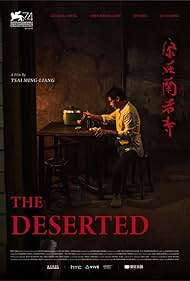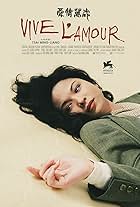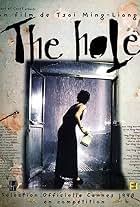The Deserted was shown in the Eye film museum in Amsterdam. I am quite a fan of Ming-liang Tsai so of course I did not pass up the opportunity to experience this, as I like his slow style in filming very much.
As with most of his work, this is very much a personal document. It is shot near the house he lives in with Kang-sheng Lee. And like in a lot of his films, not very much 'happens', the action is implied or takes place in the viewers' mind. So it is fairly static and dreamlike, a collection of scenes that is more like a situation than a narration.
Without going into too much detail, I don't think Tsai's style translates that well to this format. The viewer is placed on a fixed location in a 3D environment. You can look around, but not move around. Interesting at first, but I did become aware of some drawbacks.
In Tsai's films, he frames the characters, very often in a static shot. He chooses the shot and its composition. He uses close-ups a lot, allowing you to study the actor's faces and pick up on very subtly acted-out emotions. In The Deserted, there is no fixed frame, so while the locations are intriguing in themselves, there is no composition in what you see. The actors are are least several feet away from the camera, and combined with the relatively low resolution of the VR headset, there is little or none of that subtlety going on.
Watching his films in a darkened cinema you can sit back, become disembodied and go with the flow. Sitting in a rotating chair with a fairly heavy headset did not bring me in that relaxed state of mind, something I heard from other visitors as well. I was too aware of my environment, even though I tried to immerse myself.
It was an interesting experience but the VR did not add much, in my opinion most of the material would have worked better in a traditional format.

















